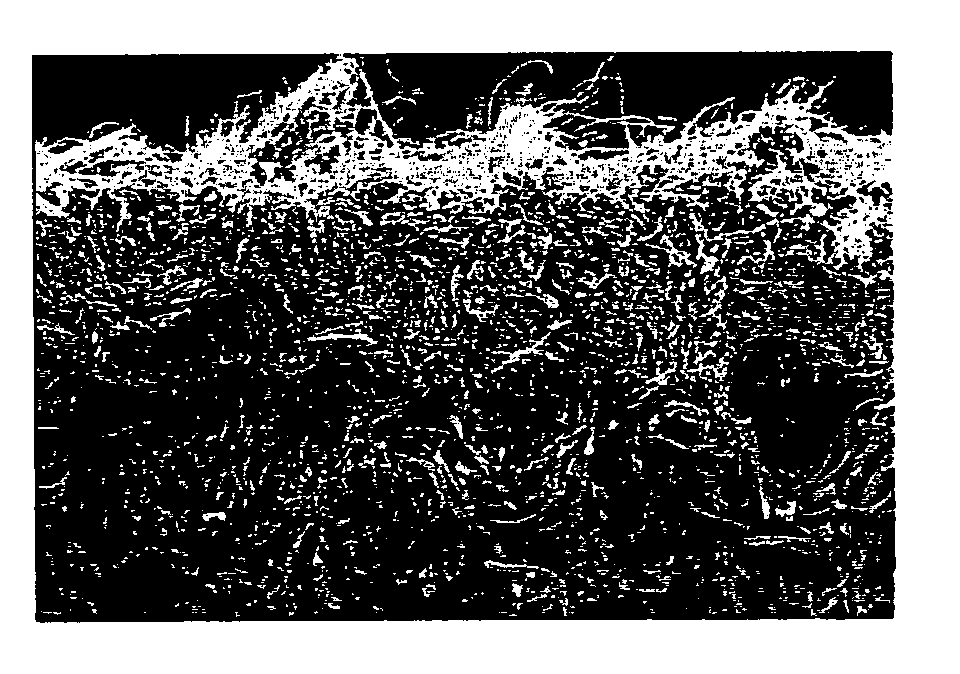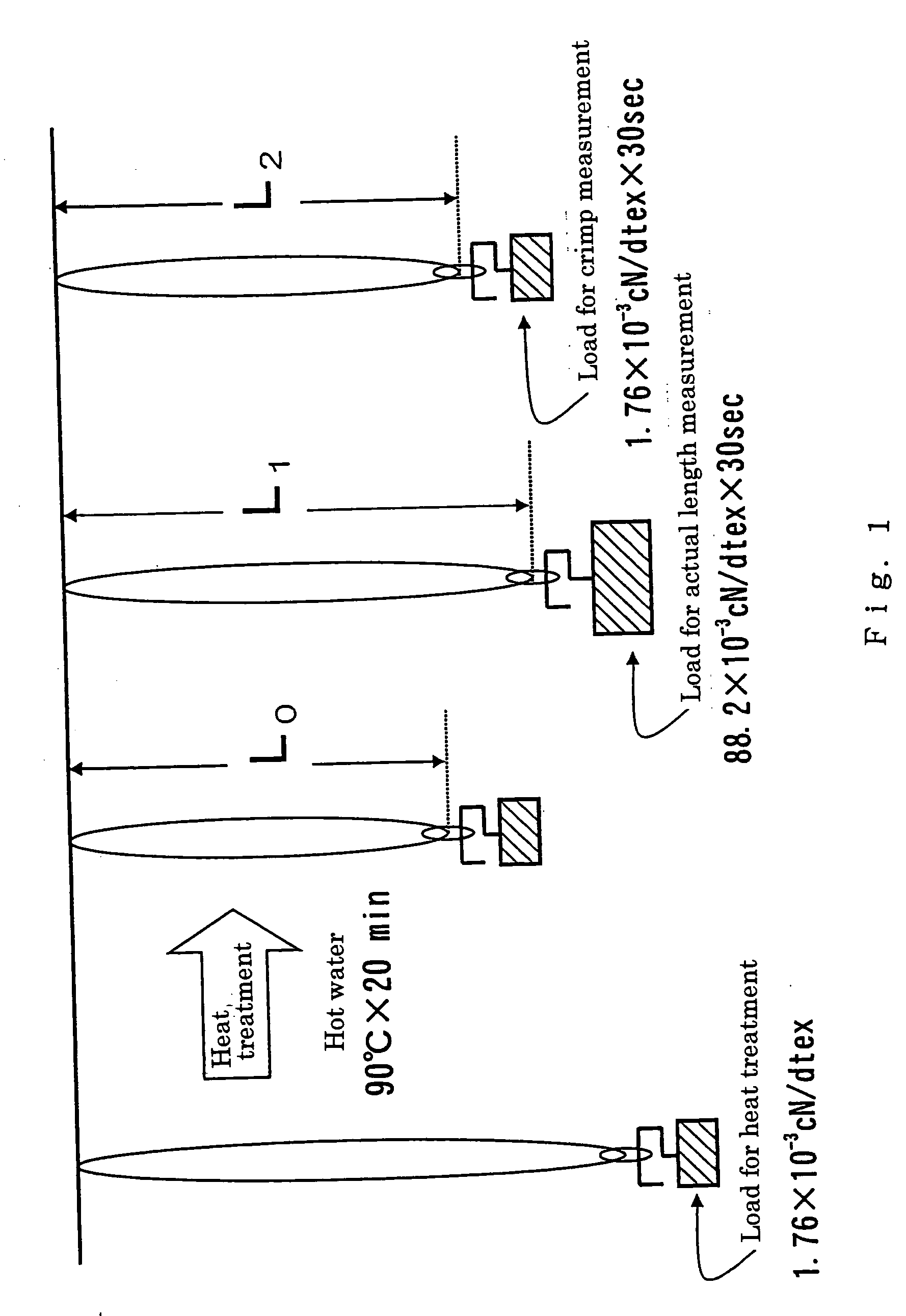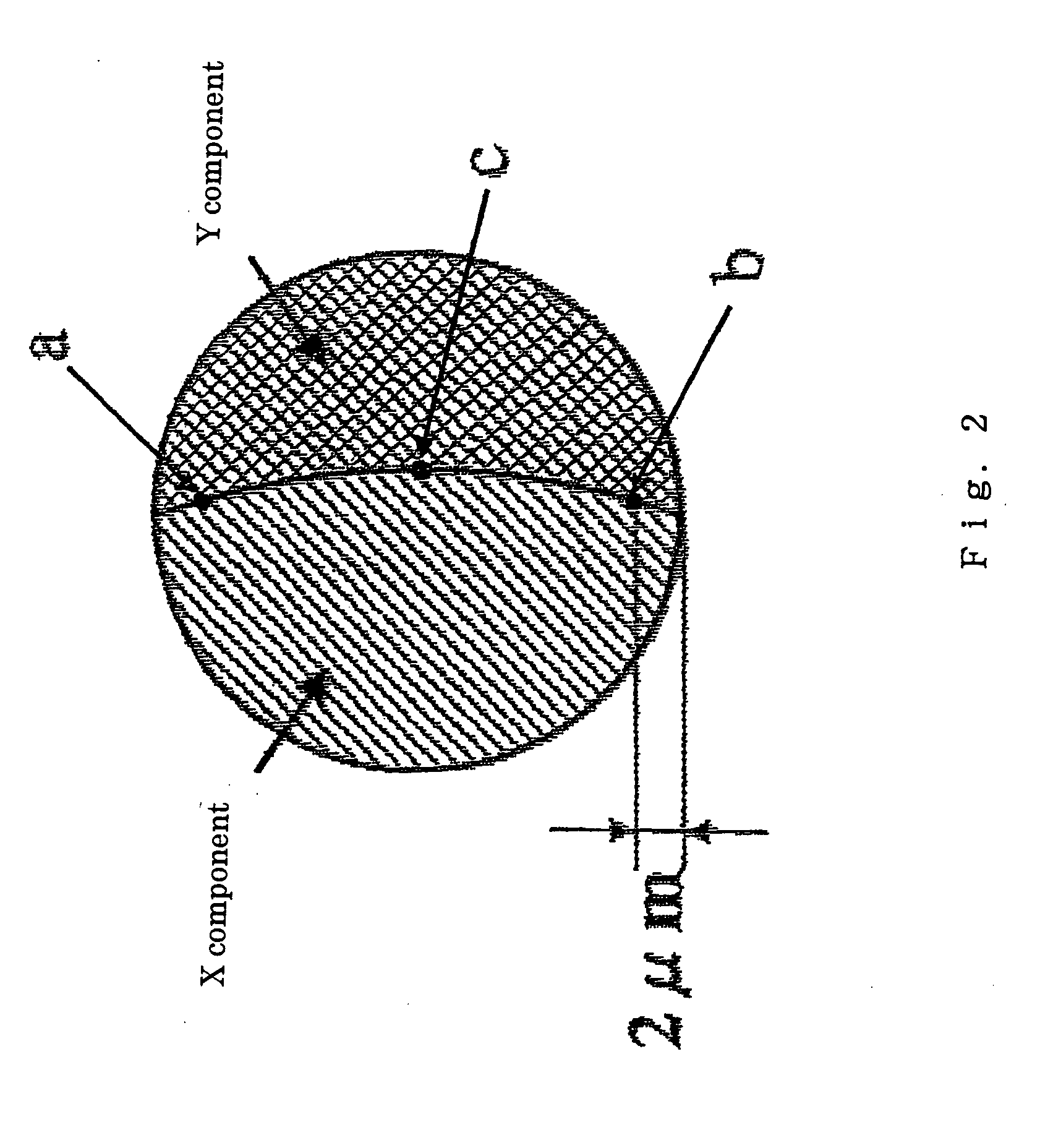Leather-like sheet and process for producing thereof
a technology of leather-like sheets and processing methods, applied in knitting, weaving, other domestic objects, etc., can solve the problems of loss of higher shrinkability, insufficient stretch, inconvenience above-described, etc., and achieve the effect of excellent wear feeling
- Summary
- Abstract
- Description
- Claims
- Application Information
AI Technical Summary
Benefits of technology
Problems solved by technology
Method used
Image
Examples
reference example 1
[0194] Homo-PTT of the intrinsic viscosity (IV) of 1.18 (1120 poise melting viscosity) and homo-PTT of the intrinsic viscosity of 0.65 (260 poise melting viscosity) were separately molten, extruded through a composite spinneret with twelve holes having a structure shown in FIG. 4 with a composite ratio (wt % ) of 50:50 at a spinning temperature of 260° C. , and taken up at a spinning speed of 1400 m / min. to obtain a side-by-side type conjugate structure undrawn yarn of 165 dtex and 12 filaments (the cross section of the fiber is as shown in FIG. 3(a)).
[0195] Furthermore, the yarn was drawn by using a hot roller-hot plate type drawing machine (contact yarn length: 20 cm, surface roughness: 3S) at 3.0 draw ratio, at the hot roller temperature of 70° C. and the hot plate temperature of 145° C. to obtain a drawn yarn of 55 dtex and 12 filaments (single fiber fineness: 4.6 dtex). The yarn-producing property was good for both spinning and drawing without any yarn breakage. Table 1 shows ...
reference example 5
[0199] There was manufactured a yarn by the same method as that of Reference Example 1, except that used was a combination of homo-PTT of the intrinsic viscosity (IV) of 1.50 (1340 poise melting viscosity) containing 0.35 wt % of titanium oxide of an average grain diameter of 0.4 μm as a matting agent and homo-PET of the intrinsic viscosity (IV) of 0.52 (570 poise melting viscosity) containing 0.35 wt % of titanium oxide of an average grain diameter of 0.4 μm as a matting agent, which was spun at a spinning temperature of 275° C. using a spinneret with twenty-four slit-type discharge holes and drawn at 3.15 draw ratio. The result is shown in Table 1. Reference Example 5 had the cross sectional shape of FIG. 3(f), and the flatness degree (ratio of the major axis to minor axis) was 1.6. The yarn-producing property was good for both spinning and drawing without any yarn breakage. Table 1 shows the physical property values, indicating excellent crimpability, crimp retaining property, an...
reference example 7
[0202] A web was formed through carding and crosslapper using an sea-island type staple fiber with single fiber fineness of 3 dtex, thirty-six islands, fiber length of 51 mm, which was made of 45 parts by weight of polystyrene as the sea component and 55 parts by weight of polyethylene terephthalate as the island component. Then, it was processed with a 1-barb type needle punching machine at a punching density of 1500 punching needles / cm2 to obtain a staple fiber nonwoven fabric of the apparent density of 0.21 g / cm3. Subsequently, it was immersed in a aqueous solution heated to about 95° C. containing 12% of polyvinyl alcohol (PVA) of polymerization degree of 500 and saponification degree of 88% such that the attached amount became 25% with respect to the nonwoven fabric weight when converted to solid content; subjected to shrinking treatment for two minutes simultaneously with impregnation of PVA; and dried out at 100° C. to eliminate moisture.
[0203] The obtained sheet was process...
PUM
| Property | Measurement | Unit |
|---|---|---|
| wt % | aaaaa | aaaaa |
| length | aaaaa | aaaaa |
| elongation recovery ratio | aaaaa | aaaaa |
Abstract
Description
Claims
Application Information
 Login to View More
Login to View More - R&D
- Intellectual Property
- Life Sciences
- Materials
- Tech Scout
- Unparalleled Data Quality
- Higher Quality Content
- 60% Fewer Hallucinations
Browse by: Latest US Patents, China's latest patents, Technical Efficacy Thesaurus, Application Domain, Technology Topic, Popular Technical Reports.
© 2025 PatSnap. All rights reserved.Legal|Privacy policy|Modern Slavery Act Transparency Statement|Sitemap|About US| Contact US: help@patsnap.com



